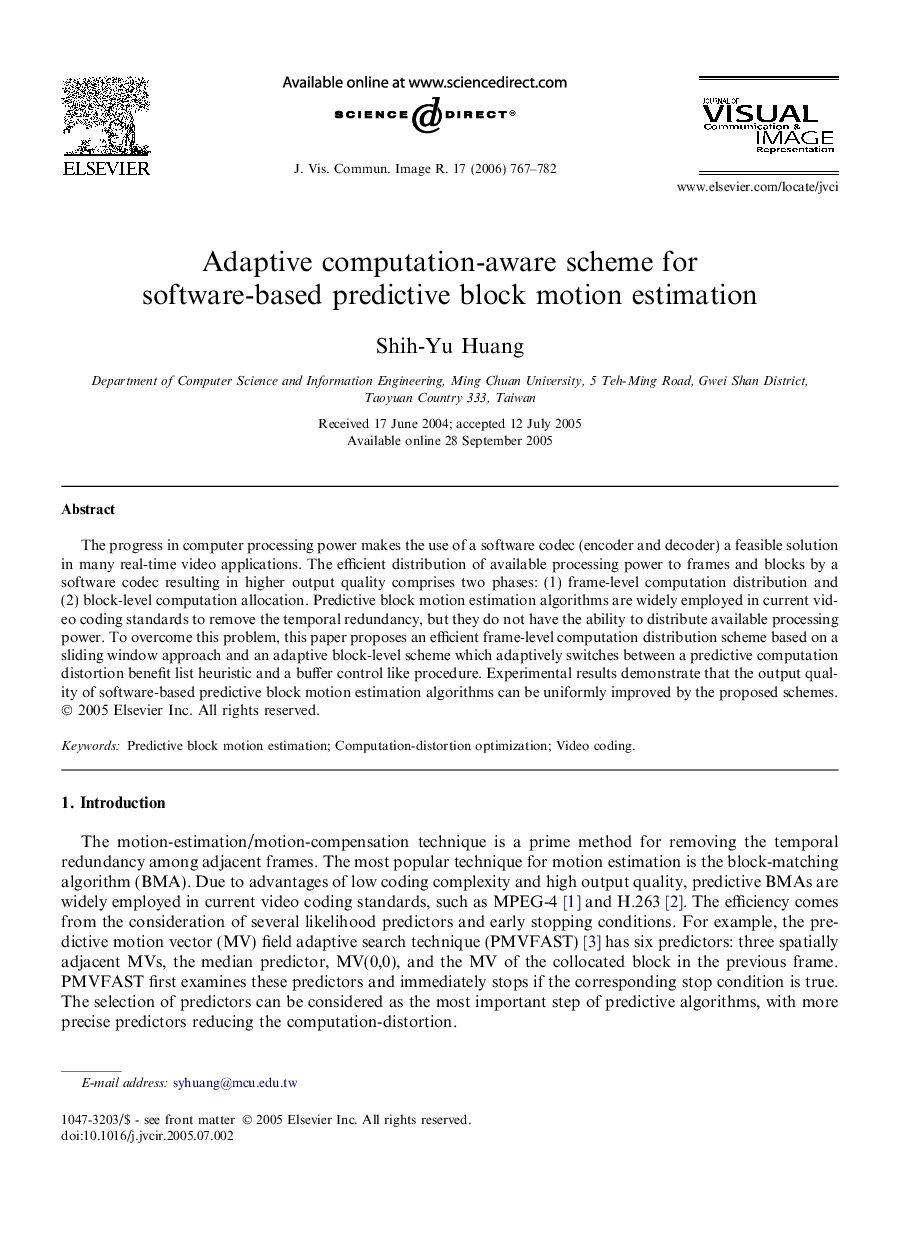| Article ID | Journal | Published Year | Pages | File Type |
|---|---|---|---|---|
| 529249 | Journal of Visual Communication and Image Representation | 2006 | 16 Pages |
The progress in computer processing power makes the use of a software codec (encoder and decoder) a feasible solution in many real-time video applications. The efficient distribution of available processing power to frames and blocks by a software codec resulting in higher output quality comprises two phases: (1) frame-level computation distribution and (2) block-level computation allocation. Predictive block motion estimation algorithms are widely employed in current video coding standards to remove the temporal redundancy, but they do not have the ability to distribute available processing power. To overcome this problem, this paper proposes an efficient frame-level computation distribution scheme based on a sliding window approach and an adaptive block-level scheme which adaptively switches between a predictive computation distortion benefit list heuristic and a buffer control like procedure. Experimental results demonstrate that the output quality of software-based predictive block motion estimation algorithms can be uniformly improved by the proposed schemes.
